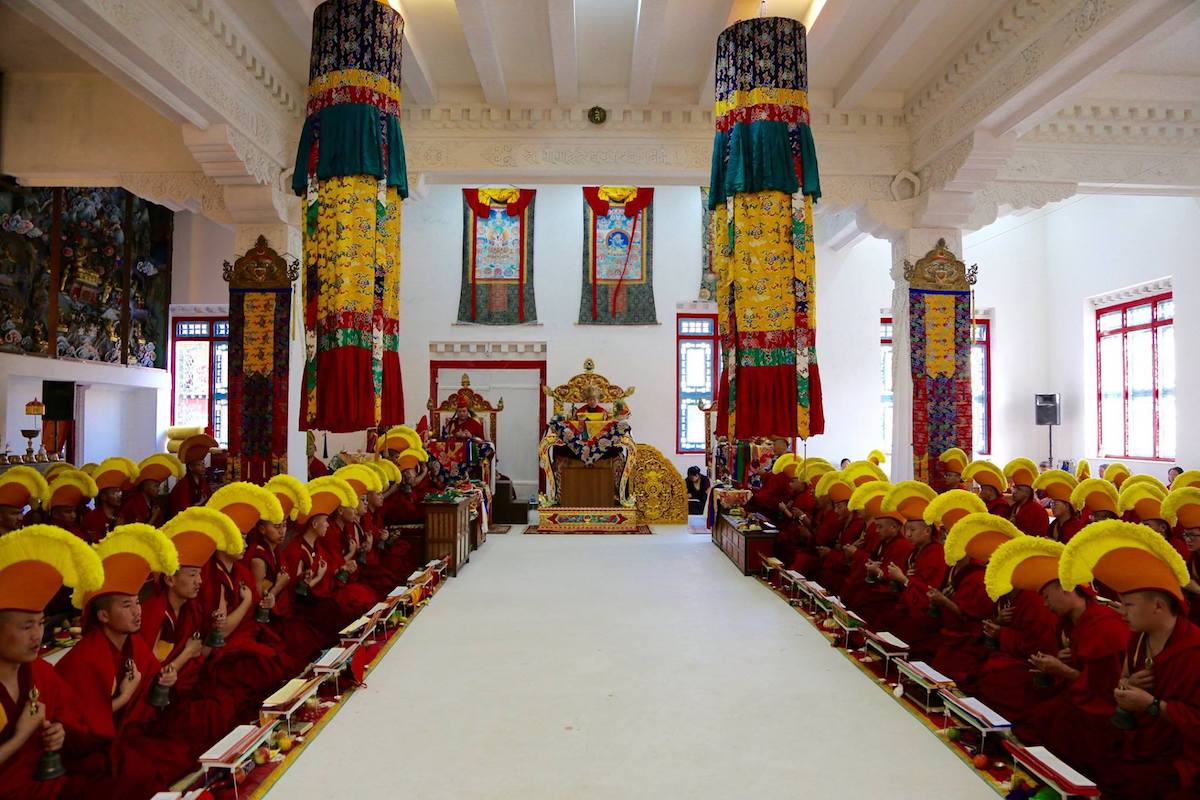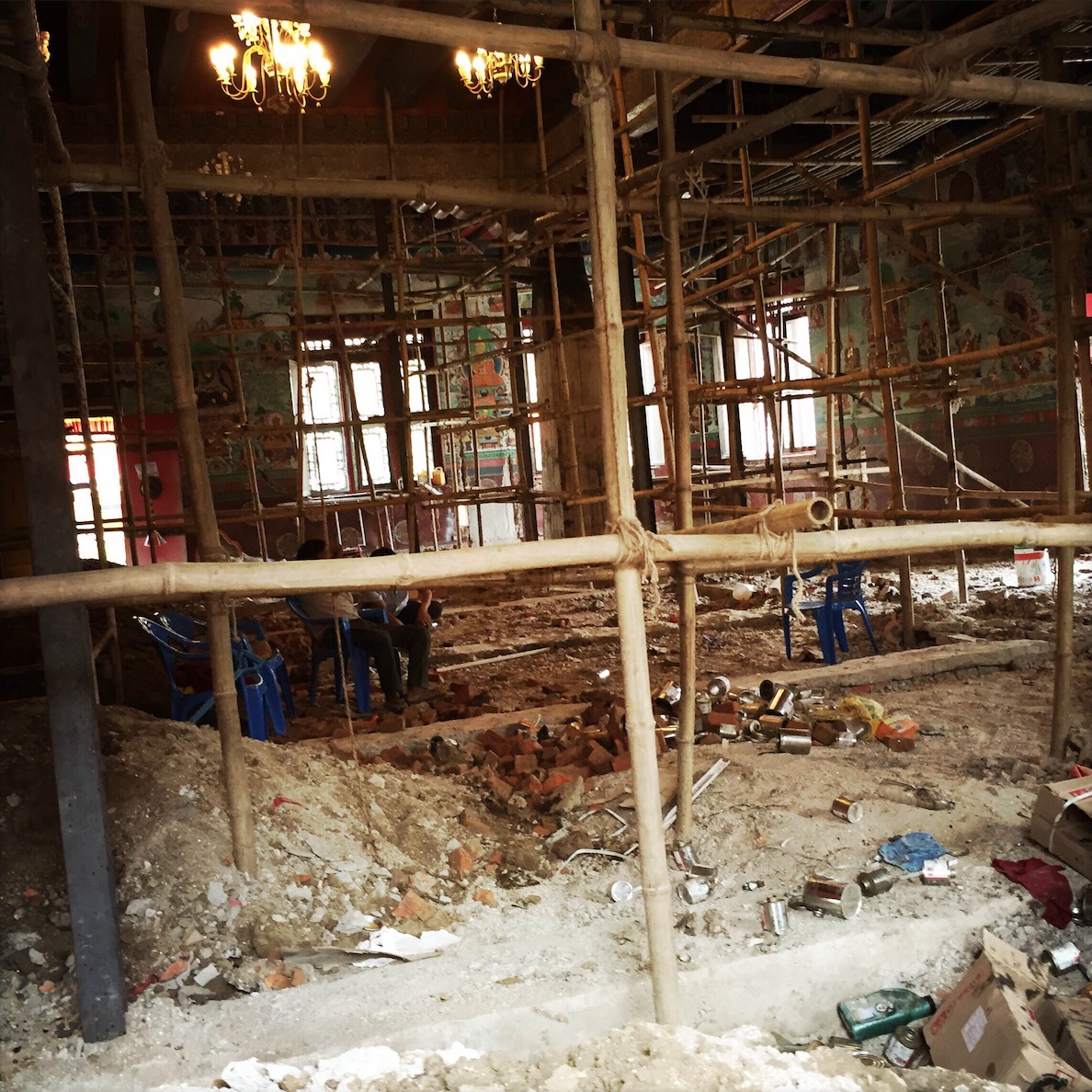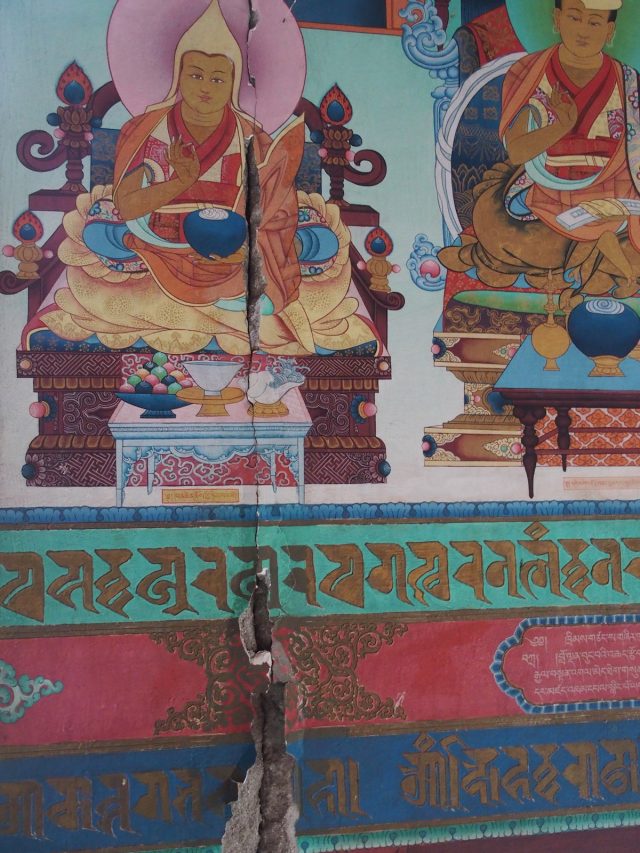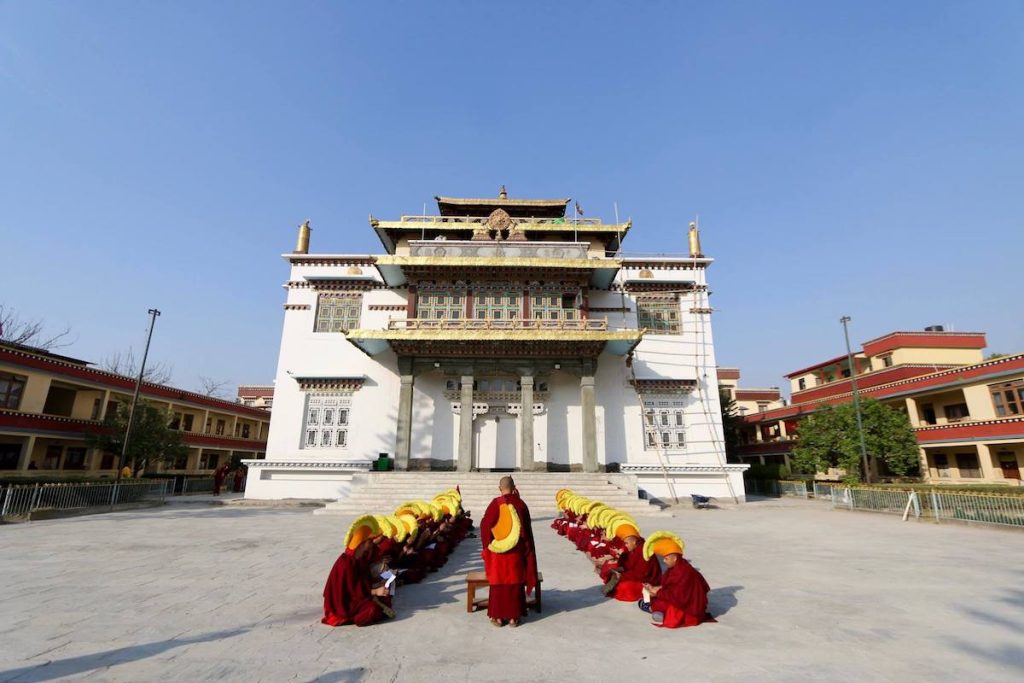More than two years after a 7.8-magnitude earthquake hit Nepal, Shechen Monastery in Boudhanath, near Kathmandu, has hit a major milestone in rebuilding the important monastery that suffered major structural damage during the 2015 disaster.

“We didn’t want to tear it down, it was built by Dilgo Khyentse Rinpoche and it’s a very precious place,” said Vivian Kurz, the director of Dilgo Khyentse Fellowship. Shechen Monastery is one of the six main temples in the Nyingma tradition of Tibetan Buddhism.
Khyentse Rinpoche, an influential Buddhist teacher who was born in Eastern Tibet in 1910, studied at the original Shechen Monastery in Tibet. That temple was destroyed in the late 1950s during the Cultural Revolution. Khyentse Rinpoche oversaw the building the new temple starting in 1980. Over 10 years, the monastery grew to include 150 statues, elaborate frescoes depicting Tibetan Buddhist history, and one of the largest libraries of Tibetan texts.
Related: Dilgo Khyentse Rinpoche’s Last Teaching

“It’s amazing that the glass didn’t come down and decapitate all of the lamas,” Kurz said of the earthquake’s damage.
In the first month following the earthquake, the Shechen monks, who are trained in first aid, traveled to rural areas to do disaster relief work for the lay community, Kurz said.
Monsoon season soon followed, and the painstaking renovation, which included retrofitting the temples, repairing cracks in the walls, reinforcing foundations and support beams, and installing a new electrical system, has taken the last two years to complete.
Kurz said the monastery is currently painted a “Zen white” and the frescoes will take master painter Konchok Ladrepa and a team of artists from the Tsering Art School two years to complete.

The restoration of the completed work cost about $800,000, which was pledged by about 1,200 donors from more than 50 countries.
“It’s really moving, we received donations from places like Bulgaria, Tahiti, a little town in Russia. It’s a really great feeling, and we have such a diverse sangha participating in the merits of rebuilding,” Kurz said. “This is a site of tremendous dharma activity . . . and students giving whatever they could [to contribute] was heartwarming for us.”
The monastery is preparing for another round of construction to repair the monks’ living quarters, which were dangerously weakened, though not destroyed, during the quake.
Thank you for subscribing to Tricycle! As a nonprofit, we depend on readers like you to keep Buddhist teachings and practices widely available.
